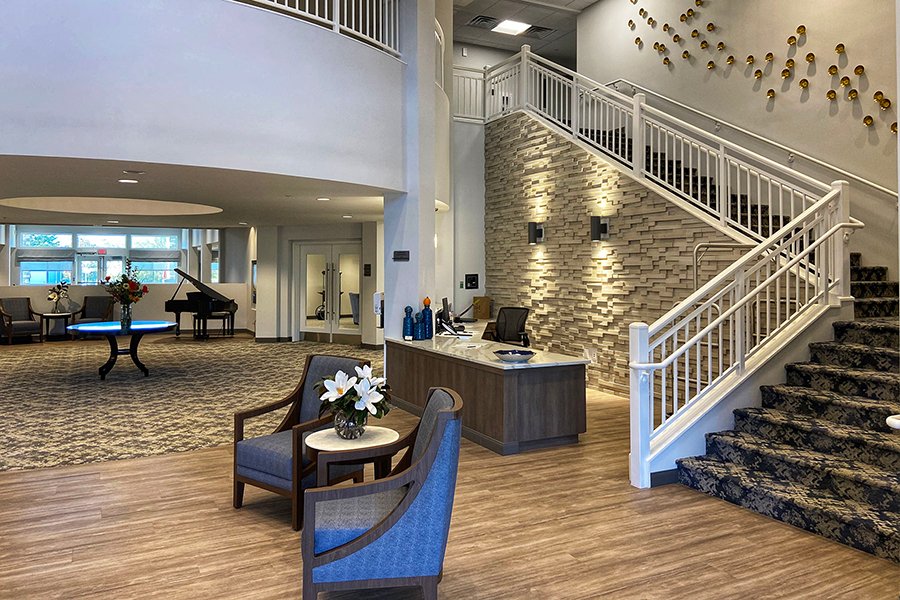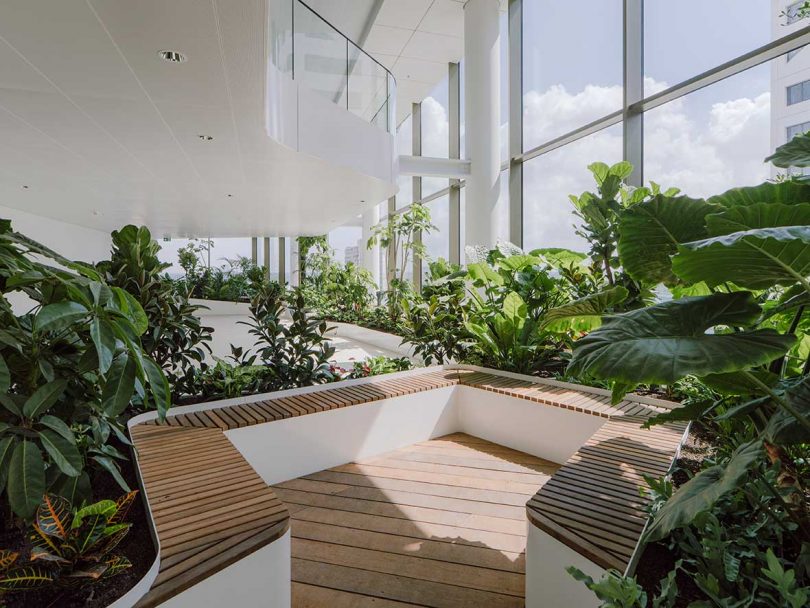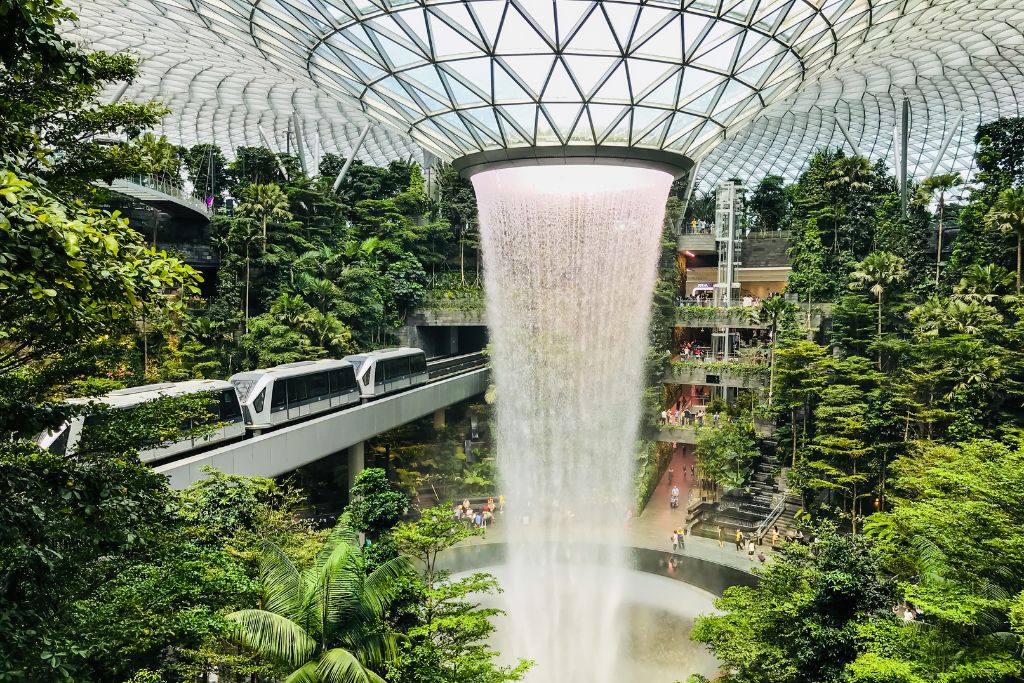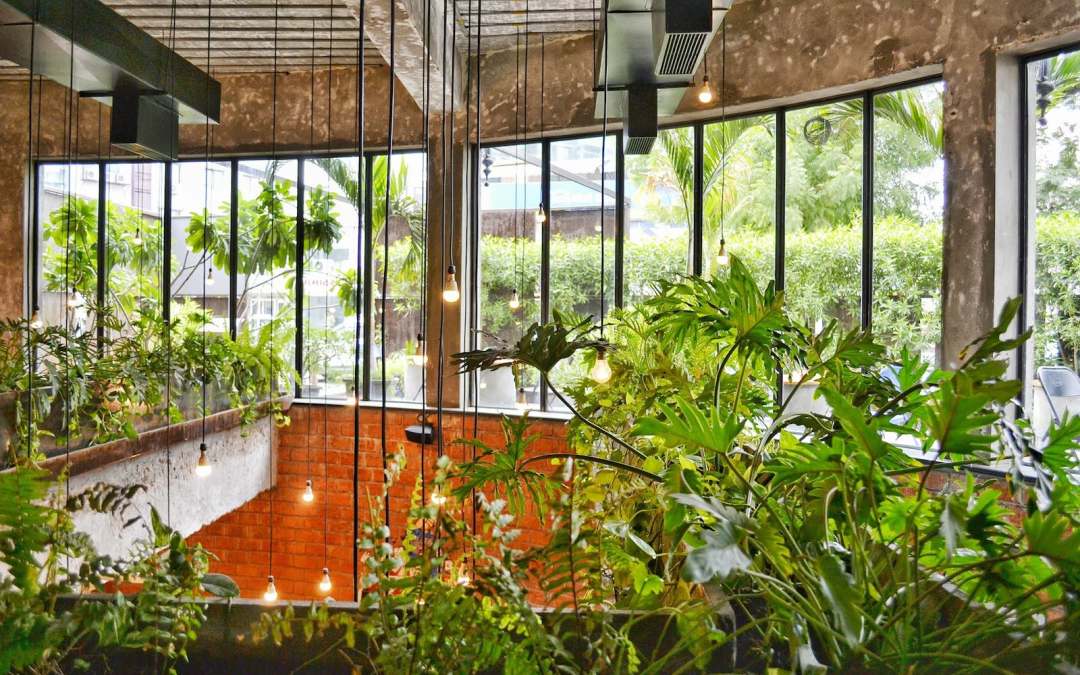The Role of Biophilic Design in Elderly Care Facilities.
Biophilic design is revolutionizing elderly care facilities by integrating nature with architecture to establish healthier and more welcoming environments that offer substantial health benefits. This approach enhances physical and mental well-being, reduces stress, and encourages social interaction among residents through human-centered design principles.
By utilizing natural light and incorporating elements such as greenery and water features, biophilic design significantly improves the daily experiences of seniors. This article examines the significance of biophilic design, its practical applications, and the tangible benefits it provides for the quality of life and longevity of elderly individuals through enhanced environmental psychology.
Why Is Biophilic Design Important in Elderly Care Facilities?
.jpg_00.jpeg)
Biophilic design is integral to elderly care facilities, as it effectively incorporates elements of nature into the architectural framework. This approach significantly enhances the emotional well-being and overall quality of life for aging populations.
By creating a healing environment, biophilic design promotes both physical and mental health, allowing elderly residents to feel comfortable, connected to their surroundings, and benefit from therapeutic gardens and cohesive design.
The integration of features such as natural light, green spaces, and sensory stimuli contributes to the development of restorative environments that encourage social interaction, enhance cognitive function, and support the overall wellness of residents through biophilic elements.
By emphasizing these biophilic elements, healthcare design can transform elderly care facilities into nurturing environments that adequately address the needs of their residents through patient-centered care and staff-resident interaction.
1. Promotes Physical and Mental Well-being
The incorporation of biophilic design elements in elderly care facilities significantly enhances both physical and mental well-being among residents, fostering an environment that supports healing, happiness, and holistic care.
Integrating features such as abundant natural light and indoor gardens cultivates a harmonious atmosphere that improves comfort, emotional support, and cognitive function through biophilia. For example, large windows that allow sunlight to enter not only illuminate spaces but also assist in regulating circadian rhythms, thereby enhancing mood and sleep patterns.
Furthermore, indoor gardens, populated with vibrant plants, serve as tranquil retreats, enabling residents to connect with nature, fostering a sense of calm, and supporting sensory experiences.
Facilities that prioritize tactile elements, such as textured wall finishes and a variety of fabrics, promote sensory interaction, stimulate engagement, and enhance cognitive stimulation through sensory design. This underscores the importance of creating a nurturing environment specifically designed to enhance overall health and vitality.
2. Reduces Stress and Anxiety
Biophilic design plays a pivotal role in reducing stress and alleviating anxiety among elderly residents by facilitating access to calming views of nature and therapeutic landscapes.
Thoughtfully integrated features, such as serene water elements like fountains or ponds, in conjunction with lush green roofs, create a tranquil environment that promotes emotional well-being. These visual cues from nature contribute to a comforting atmosphere where the soothing sounds of water and vibrant greenery are readily appreciated.
Engagement with sensory gardens and participation in nature walks stimulate the senses and evoke feelings of tranquility, which are essential for enhancing resilience and coping mechanisms.
The therapeutic interaction with nature not only elevates mood but also strengthens overall mental health through nature therapy and emotional well-being. This reinforces the understanding that the surrounding environment plays a crucial role in fostering emotional stability.
3. Increases Social Interaction
One of the primary advantages of biophilic design in elderly care facilities is its capacity to enhance social interaction among residents, thereby fostering a sense of community and belonging.
This connection is often strengthened through the intentional design of outdoor spaces, community rooms, and shared gardens that encourage collaboration, engagement, and community involvement. These areas serve as venues for residents to gather, promoting discussions and activities that cultivate meaningful relationships.
Additionally, as families visit, they can also partake in these communal settings, which enhances family engagement and fortifies bonds across generations.
By integrating nature into the daily lives of elderly individuals, these environments not only facilitate aging in place but also significantly improve the overall quality of life, promoting active participation in social activities that support emotional well-being and social connectedness.
How Can Biophilic Design Be Incorporated in Elderly Care Facilities?
The incorporation of biophilic design into elderly care facilities can be accomplished through a range of innovative strategies that emphasize the integration of natural elements and the development of therapeutic environments.
This approach significantly enhances the overall experience for residents.
1. Natural Light and Views of Nature
Maximizing natural light and providing views of nature are essential elements of biophilic design, significantly enhancing the environmental quality and visual connection of elderly care facilities.
These design features not only improve the aesthetic appeal of such spaces but also foster a meaningful connection with the surrounding natural environment, promoting visual stimulation and environmental factors conducive to well-being. Residents frequently experience substantial benefits from exposure to sunlight, which has been demonstrated to elevate mood, reduce feelings of depression, and enhance cognitive function.
The warmth of natural light cultivates a welcoming atmosphere, encouraging social interactions, promoting a sense of belonging among the elderly, and enhancing resident comfort and autonomy. Furthermore, visual access to gardens and greenery has calming effects, enabling individuals to find solace and peace, thereby contributing to their overall emotional well-being and quality of life.
2. Indoor Plants and Greenery
.jpg_01.jpeg)
Integrating indoor plants and greenery into elderly care facilities significantly enhances aesthetic appeal, provides essential sensory stimulation, emotional support, and improves air quality for residents.
By incorporating a variety of indoor plants, such as peace lilies, snake plants, and pothos, these facilities can cultivate a comfortable and soothing environment that positively impacts the mental and emotional well-being of seniors, promoting air quality and emotional resilience. These plants are not only low-maintenance but also contribute to improved air quality, offering numerous health benefits.
Establishing indoor gardens enables residents to engage with nature, which has been demonstrated to reduce stress and promote relaxation.
The act of tending to plants can foster a sense of joy and purpose, facilitate social interactions among residents, and enrich their overall experience within care settings through resident engagement and socialization.
3. Natural Materials and Textures
The incorporation of natural materials and tactile elements in the architectural design of elderly care facilities significantly enhances the sensory experience and contributes to a therapeutic environment.
These sustainable materials, often sourced from renewable origins, not only minimize the ecological footprint of the construction process but also foster a deeper connection between residents and their surroundings through sustainable practices and building materials.
By integrating principles of biophilic architecture—such as abundant natural light, greenery, and organic textures—these spaces cultivate a sense of comfort, well-being, and emotional support through design impact. Research indicates that the inclusion of such features can improve mood, reduce stress, enhance the overall quality of life for occupants, and promote wellness through therapeutic spaces.
Ultimately, prioritizing environmentally conscious design not only serves to benefit the planet but also creates nurturing environments that support the health and happiness of older adults through sustainable practices and nature-based interventions.
4. Water Features
Incorporating water features into elderly care facilities is instrumental in creating therapeutic landscapes that stimulate the senses, enhance the emotional well-being of residents, and promote tranquility and nature immersion.
Elements such as tranquil ponds and elegant fountains serve as focal points for relaxation and mindfulness, providing a soothing ambiance that promotes a sense of calm. The gentle sound of flowing water can alleviate anxiety, encouraging individuals to pause, engage in reflection, and experience sound design that promotes positive environments.
Furthermore, the integration of these features can foster a sense of community by facilitating interactions among residents during leisurely walks or group activities centered around the water, promoting outdoor activities and engagement. The presence of fish in ponds and the birds attracted to the environment further enrich the setting, promoting outdoor therapy, strengthening social connections, and enhancing memory care—essential for maintaining emotional health within the aging population.
5. Outdoor Spaces
Designing outdoor spaces that incorporate biophilic principles facilitates nature immersion for elderly residents, thereby promoting a healthier lifestyle and strengthening their connection to the environment.
These environments can be customized to ensure accessibility, featuring smooth pathways and strategically positioned outdoor seating that encourages residents to engage in light physical activity, promoting mobility and independence.
By integrating safety measures such as adequate lighting and non-slip surfaces, these areas not only enhance well-being but also promote social interactions among community members.
Accessible outdoor spaces are essential community resources that support aging in place by enabling seniors to connect with their neighbors, cultivate meaningful relationships, and enjoy outdoor access.
Such designs not only address the needs of older adults but also create vibrant hubs for individuals of all ages, ultimately enhancing community cohesion through cultural considerations and intergenerational spaces.
What Are Some Successful Examples of Biophilic Design in Elderly Care Facilities?
Successful implementations of biophilic design in elderly care facilities illustrate how thoughtfully integrated therapeutic environments enhance resident comfort, promote healing environments, and greatly improve the quality of life for residents.
These examples showcase innovative strategies in the field of elder care, highlighting the positive impact of incorporating nature and natural elements into care settings.
1. Green House Project
The Green House Project serves as a prime example of biophilic design by creating small, homelike environments that enhance residential comfort while fostering community engagement among elderly residents.
This innovative approach features a meticulously designed layout that promotes social interaction while also providing opportunities for privacy as needed, effectively balancing communal living with personal space.
Accessibility is a fundamental aspect of the design, with wide hallways and common areas that facilitate ease of navigation for residents, even those with mobility challenges.
The seamless integration of natural elements—through abundant windows that allow for ample natural light, gardens that residents can cultivate, and indoor plant life—not only enhances the aesthetic appeal of the environment but also encourages a connection with nature.
These carefully considered design elements collectively contribute to uplifting the spirits of residents, significantly enhancing their overall emotional and physical well-being.
2. The Alzheimer’s Garden
.jpg_10.jpeg)
The Alzheimer’s Garden serves as a prominent example of biophilic design, utilizing therapeutic landscapes to create a safe and engaging environment for residents with dementia and memory care needs.
This meticulously designed space features sensory pathways that guide individuals through the garden, promoting exploration and movement. The diverse textures of plants and materials, including smooth stones, rough bark, and soft flowers, stimulate tactile experiences that enhance cognitive engagement.
Strategically placed nature-based interventions, such as calming water features and vibrant flower beds, are designed to evoke positive memories and emotional responses. These elements not only cultivate a sense of tranquility but also significantly improve the emotional comfort of residents, facilitating a connection with their surroundings while encouraging social interaction and enhancing overall well-being.
3. The Eden Alternative
The Eden Alternative embodies a groundbreaking approach to biophilic design in elderly care facilities, emphasizing the significance of social spaces and community resources to enhance holistic care.
This innovative model promotes a profound connection to nature while encouraging meaningful interactions among residents. By incorporating gardens, walking paths, and communal areas, it fosters inviting environments where individuals can convene, share stories, and engage in activities that enrich both the body and the spirit.
Furthermore, the strategy of integrating local art, music, and nature-inspired decor not only enhances the aesthetic appeal of these spaces but also nurtures a sense of belonging and community. Such an environment substantially improves the overall quality of life, enabling residents to experience joy and purpose while forming enduring relationships with one another and their surroundings.
What Are the Benefits of Biophilic Design in Elderly Care Facilities?
Biophilic design presents a variety of advantages for elderly care facilities, including improvements in cognitive function, enhancements in emotional well-being, and increased opportunities for social interaction and nature immersion.
These benefits collectively contribute to an overall improved quality of life for residents.
1. Improved Cognitive Function
One of the significant advantages of biophilic design is its positive influence on cognitive function, particularly among individuals with memory care requirements, as immersion in nature fosters psychological comfort and cognitive engagement.
Research has demonstrated that specific biophilic elements, such as sensory gardens and expansive views of nature, play a critical role in enhancing mental clarity and emotional well-being.
For example, studies indicate that access to sensory gardens, which engage the senses through a variety of textures, colors, and scents, can result in reduced anxiety and improved mood among elderly populations. Furthermore, the presence of greenery within one’s visual field has been associated with increased attention spans and enhanced memory recall.
In summary, these findings suggest that the integration of biophilic design elements not only promotes healthier cognitive functions but also significantly enhances the quality of life for older adults.
2. Enhanced Mood and Emotional Well-being
Biophilic design has been demonstrated to improve mood and emotional well-being in elderly residents by providing sensory stimulation, fostering a strong connection to nature, and enhancing resilience against mental health challenges, ultimately contributing to better health outcomes.
This design approach effectively incorporates natural light, organic materials, and greenery into living spaces, thereby bridging the divide between indoor environments and the outdoors. Elements such as living walls, water features, and expansive windows that offer views of gardens considerably elevate spirits and alleviate stress levels.
For example, memory care facilities that incorporate gardens with wildflowers and pathways promote not only physical activity but also cognitive engagement, which leads to improved emotional states among residents. These implementations exemplify how thoughtfully designed environments can cultivate a sense of belonging and connection, ultimately contributing to enhanced overall well-being.
3. Increased Physical Activity
Incorporating biophilic design in elderly care facilities promotes increased physical activity among residents by creating inviting outdoor spaces and fostering opportunities for community engagement.
These thoughtfully designed environments not only attract residents but also act as a catalyst for social interaction and wellness activities. Accessible green spaces encourage individuals to engage in light exercises, walk with friends, or participate in organized fitness programs, thereby enhancing both their physical and mental well-being.
For the aging population, regular movement is essential; it can significantly reduce the risk of chronic illnesses, improve mobility, and enhance overall vitality. The refreshing natural settings cultivate a sense of belonging and purpose, which are critical elements in promoting a healthier, more active lifestyle throughout one’s golden years.
4. Better Sleep Quality
.jpg_11.jpeg)
Biophilic design significantly enhances sleep quality for elderly residents by improving environmental conditions through the incorporation of natural light and calming design elements that facilitate relaxation.
This approach not only optimizes light exposure but also integrates soothing colors and textures to create a tranquil atmosphere. When residents are immersed in nature-inspired designs, they frequently report lower stress levels, which is essential for establishing a healthy sleep routine.
Furthermore, minimizing noise through strategic spatial planning, sound design, and the use of sound-absorbing materials can cultivate a peaceful environment, enabling individuals to unwind more effectively and supporting better air quality.
These design elements are closely associated with emotional support, as nurturing surroundings can promote a sense of well-being and security, ultimately contributing to enhanced overall health and improved sleep quality.
5. Overall Better Quality of Life
Biophilic design significantly enhances the overall quality of life for elderly residents by prioritizing emotional well-being, creating restorative environments, and encouraging a connection to nature through nature-based interventions and therapeutic spaces.
This innovative approach integrates elements such as natural light, organic materials, and green spaces into daily living, promoting a calming atmosphere that alleviates stress and anxiety, while ensuring sustainability.
Case studies from various senior living facilities have indicated notable improvements in residents’ mood and engagement levels following the implementation of biophilic design principles.
For example, a community in California reported a 30% increase in social interactions among residents after the introduction of gardens and communal areas designed to replicate natural settings.
Testimonials indicate that these enhancements foster a sense of belonging and comfort, ultimately contributing to an improved quality of daily life for individuals and encouraging sustainable practices.
Frequently Asked Questions
What is biophilic design and how does it play a role in elderly care facilities promoting health benefits?
Biophilic design is an approach to architecture and interior design that incorporates natural elements and patterns into the built environment. In elderly care facilities, this can include features such as natural lighting, indoor plants, and access to outdoor spaces, all of which have been shown to have numerous benefits for elderly residents.
How does biophilic design impact the physical health of elderly residents?
Studies have shown that exposure to nature and natural elements through biophilic design can have a positive impact on physical health in elderly care facilities. It can help to reduce stress, lower blood pressure, and improve overall well-being.
What are some of the mental health benefits of incorporating biophilic design and socialization in elderly care facilities?
Biophilic design, deeply rooted in environmental psychology, has been found to have a calming and soothing effect on residents, which can be particularly beneficial for those with dementia or other cognitive impairments. Incorporating nature into living spaces can also help to reduce feelings of isolation and depression, thereby enhancing mental health and overall well-being, and improving cognitive function.
Can biophilic design help to create a more comfortable and welcoming environment for elderly residents through restorative environments and nature-based interventions?
Yes, incorporating natural elements into the architectural design of elderly care facilities can help to create a more comfortable and inviting atmosphere, promoting social interaction and enhancing resident comfort. This can be especially important for residents who may be experiencing feelings of displacement or unfamiliarity in their new living environment, thereby supporting emotional well-being.
How can biophilic design be implemented in existing elderly care facilities to enhance sensory design and cognitive stimulation?
Biophilic design can be incorporated into existing facilities through simple changes such as adding indoor plants, installing larger windows to allow for natural light, and creating designated outdoor spaces or therapeutic gardens for residents to enjoy. Additionally, ensuring nature views and outdoor access can promote sensory experiences and improve resident engagement. It is also important to consider the needs and preferences of the residents when implementing these changes to enhance their quality of life.
Are there any potential challenges or limitations to implementing biophilic design in elderly care facilities, considering sustainability and safety?
One potential challenge is the cost and resources required to make significant changes to the design of existing facilities. Factors such as staff training, safety, accessibility, and mobility need to be carefully evaluated. It is also important to consider the potential safety hazards for elderly residents, such as uneven walking surfaces or allergens from plants. Careful planning, including the use of sustainable practices and expert consultation, can help to address these challenges and ensure the successful implementation of biophilic design in elderly care facilities.

I’m Bruno, an architect with a deep passion for Biophilic Design in Urban Architecture. Throughout my career, I’ve focused on integrating natural elements into urban planning, and I created this site to share my insights and foster a deeper understanding of how biophilic principles can significantly enhance urban living. Dedicated to sustainable development, I continually explore innovative design solutions that promote both environmental and human well-being in city landscapes.














Publicar comentário